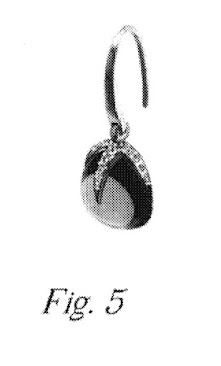Copyright © Françoise Herrmann
Do you play the flute? The clarinet? The trombone? The saxophone, or the French horn? Do you clean your instrument using 90% isopropyl alcohol in a spray bottle or equivalent, letting the alcohol evaporate, and/or using a pull-through swab for specific parts?
Begone the prior art of cleaning wind instruments! In comes the Moonlight system, with add-ons each designed for your particular instrument. The micro-controlled 10-minute cleaning/sanitizing cycle of the Moonlight system might be programmed to extract humidity and dry the inside of the instrument, generating UV-radiation capable of eliminating micro-organisms, together with ventilated UV-sanitized air to sanitize the instrument. An invention filed during the peak of the COVID-19 pandemic, whose significance was no doubt amplified, due to the increased awareness of the importance of sanitation.
A US utility patent application, US2020230662A1, titled Methods of cleaning musical wind instruments, was filed on July 23, 2020, and abandoned. A European patent application EP3915103A1 was otherwise falso iled on July 30, 2020, as well as a World Intellectual Property Organization (WIPO) patent application, WO2020152533, on July 23, 2020, both still active with the same title. The three inventors on record, Jean Pierre Acquadro, Benoit Bertet, and Vincent Charlon, are all French.
The invention essentially comprises a light-emitting source with a wavelength capable of killing microrganisms. The light emitting source is mounted on a fan, able both to pull and push air, through the mouthpiece, for quick drying and sanitizing. Thus, the air is pulled from the instrument through the mouthpiece, using a topside device, and pushed from the barrel of the instrument, through the mouthpiece, using a standon device. Bacteria are known to accumulate around the mouthpiece, at the top of the instrument.
The light-emitting devices emit in the UV-C light band with a preferred 275 nm wavelength, preferably positioned at various locations, depending on the instrument. The fan is preferably a microfan, with a preferred airflow of approximately 5 cubic feet per minute (CFM). Together, the fan and light-emitting devices are designed to operate for preferably 10-minute cycles of drying and sanitizing.
Sanitizing is measured in terms of a 4 log 10 reduction in the bacterial count for both the mouthpiece and the instrument. The various instrument-specific pieces of the Moonlight sanitizing device come with adapters to fit the specific sizes of the various wind instruments.
Below, the Figures 4 and 6 of the patent, respectively show topside Moonlight sanitizing devices (10) for a saxophone, and a standon Moonlight sanitizing device (30) for the clarinet. An image of a marketed Moonlight device for a saxophone soprano is also included.
Below the abstract of the European patent EP3915103A1, is also included.
New methods and devices for cleaning, drying and sanitizing musical wind instruments are disclosed. According to one embodiment the devices of the invention contain at least the body of the device, inside which are included at least a fan and one or more light emitting sources capable of killing microorganisms. The devices are provided with an internal or external power supply method and are specifically fitted for multiple wind musical instruments either by their shape and design or using various sizes of adaptors to fit multiple musical instruments. The devices are able to dry and sanitize wind instruments in less than 30 minutes of use, before or after playing the instrument. [Abstract EP3915103A1]
References
Moonlight woodwinds drier and sanitizer
















